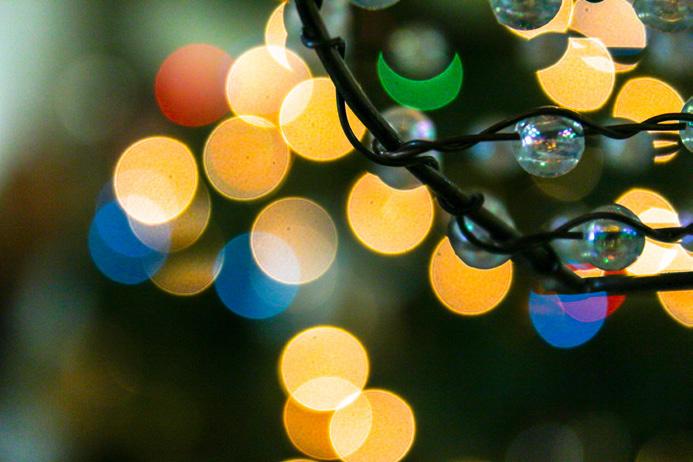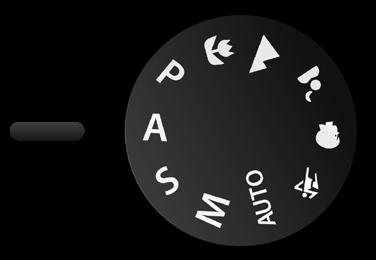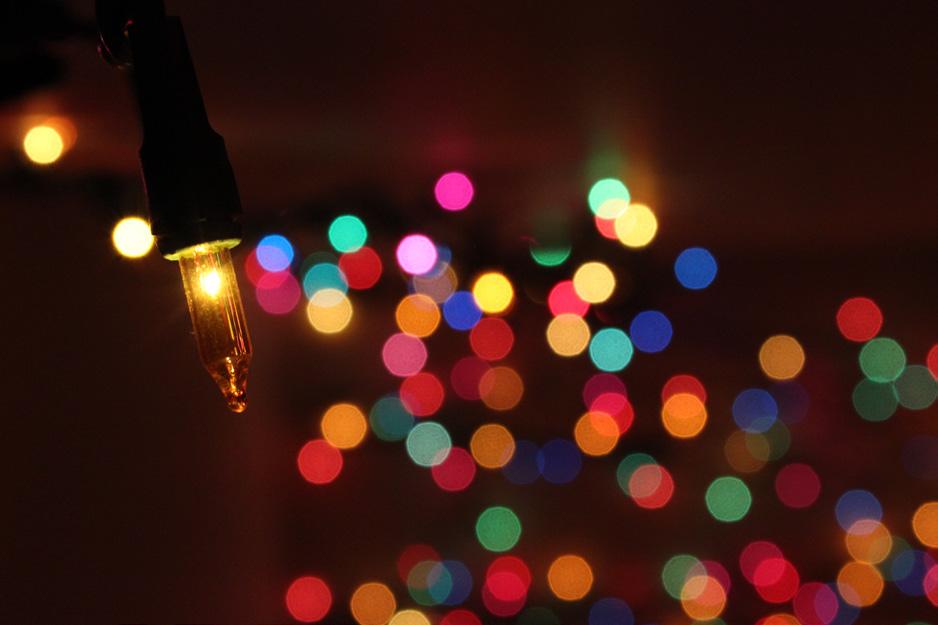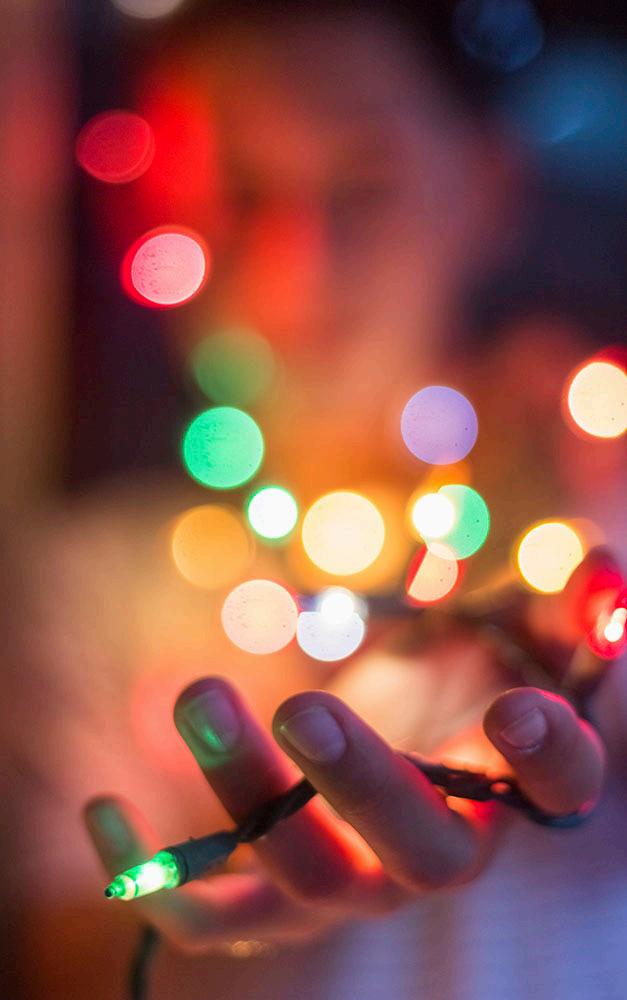
4 minute read
BOKEH
from Bokeh
BOKEH
In photography, BOKEH is the aesthetic quality of the out-of-focus parts of an image produced by a lens. “The way the lens renders out-of-focus points of light.”
Advertisement
The term “bokeh” comes from the Japanese word boke, which means “blur” or “haze.” The English spelling bokeh was popularized in 1997 in Photo Techniques magazine, when Mike Johnston, the editor, altered the spelling to suggest the correct pronunciation to English speakers.

f/4.5 @1/6 42mm Photo by Angelina Valtierra, Dripping Springs High School (Texas)
IN YOUR WORDS, WHAT IS BOKEH?
Bokeh is an effect where lights are out of focus creating globules instead of sharp defined bulbs. The same idea can apply to other objects, such as dew on grass, that reflect or emit light.
WHEN DO YOU TEACH THIS IN YOUR CLASSROOM? WHY?
I’ve varied when I have taught this technique since I only spend a day on the concept. Most recently, I taught it after their final projects for the semester were due in December. We used the lights and trees in the library as practice. I have lights in the classroom year round so I can do the lesson whenever.
WHAT EQUIPMENT DO YOU USE WHEN TEACHING THIS?
We have nine Canon DSLRs. They vary in model from SL1, XS to a Mark III. Students pair up and share one to practice. They have their own SD cards so they can submit their photos afterward.
HOW DO YOU TEACH THIS? WHY?
I simply demo it in my classroom by using a DSLR and pictures of the settings on the projector. As I explain how to widen the aperture or lower the f/stop on the camera, I point to the buttons and menu selections on the projector screens. Students do it with me to get the settings correct. Then I demo switching the focus mode from auto focus AF to manual MF on the lens if they simply want the lights out of focus with the bokeh and no object in front.
WHAT ADVICE WOULD YOU HAVE FOR OTHER TEACHERS USING THIS TECHNIQUE IN THEIR CLASSROOM?
Practice beforehand to make sure the equipment will work and the effect comes through. During the practice, create examples to show on the projector, specifically to show an object in front of the lights versus no object. You can also illustrate how distance to the lights affects the strength of the bokeh or how the globules look. Feel free to find and share a YouTube video tutorial you like.
WHAT DO STUDENTS ENJOY ABOUT THIS LESSON?
It is something they think is cool looking and they can play with, especially around Christmas. They immediately see the results of their efforts and how altering settings changes an image. It also is different from taking school-related event photos.
WHAT IS THE BIGGEST CHALLENGE FOR STUDENTS LEARNING THIS TECHNIQUE?
Because they struggle with ISO and shutter speed, I recommend simply putting the camera on aperture priority mode so the camera sets the other controls for them. WHY DO YOU TEACH BOKEH? It helps students understand aperture and depth of field, and they enjoy it.

JESSICA STAMP Dripping Springs High School (Texas)
What is an f/stop? The f/stop is a measure of the size of the aperture. The f/stop is the ratio of the system’s focal length to the diameter of the entrance pupil.
The f-number N is given by: f D N= where f is the focal length, and D is the diameter of the entrance pupil (effective aperture).
For example, if the focal length of a lens is 10mm and its entrance pupil diameter is 5mm, the f-number is 2, expressed by writing “f/2.”

f/5.6 @1/100 55mm lens Photo by Cady Russell, Dripping Springs High School (Texas)

f/1.7 @1/640 43mm lens Photo by Rumi Sait, Westlake High School (Austin, Texas) Alison Strelitz, instructor | We cover bokeh briefly in photojournalism. It is a fun effect and has a visually pleasing look. The kids are usually familiar with it, but they often do not realize that there is a name for it and that they can get it intentionally by manipulating their cameras and apertures. Students submitted photo stories for their finals, and the holiday lights gave them a great opportunity to get the look.
Three things influence depth of field: aperture — The lower the number of the f/stop, the lower the depth of field. distance from subject — The closer the camera is to the subject, the lower the depth of field. focal length of the lens — Longer lenses inherently have lower depth of field.
What is the aperture? An aperture is a hole or an opening through which light travels.
What is depth of field? The area in front of and behind the subject that appears in focus. Low depth of field means the background is blurry. High depth of field means the background is sharp.

APERTURE PRIORITY Aperture priority, abbreviated A or Av on a camera mode dial, is a setting on some cameras that allows the user to set a specific aperture value while the camera selects a shutter speed to match it that will result in proper exposure based on the lighting conditions as measured by the camera’s light meter.

f/18 @1/250 50mm macro lens Photo by Abby Mueller, Nolan Catholic High School (Fort Worth, Texas)



f/8 @1/60 41mm Photo by Sarah Sinclair, Andover High School (Kansas) From Cary Conover, instructor | Every semester I give the students carte blanche for their final assignment: “Five Pictures on a Theme.” At the end of every fall semester, Christmas lights always make an appearance in a handful of the students’ projects. We had a discussion about this picture and how the bokeh is accentuated not only because of the large aperture but also because of the close focus distance.

f/1.8 @1/30 50mm lens Photo by Adam Purvis, Whitney High School (Rocklin, California)

